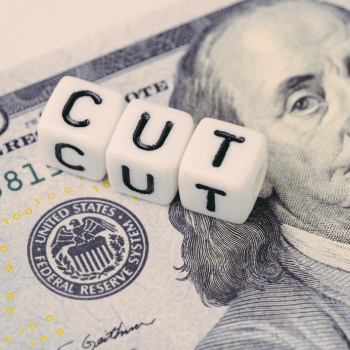
What the Fed Rate Cuts Mean for the Embedded Industry
Posted on October 8, 2025
With the tariff pressure and the weak jobs data, financial analysts have long been anticipating a rate cut by the US Federal Reserve, and the board finally fulfilled this prediction, slashing rates by 25 basis points.
But what exactly does this mean for the industry? And are further rate cuts likely? Is this a stopgap measure or likely to have long-term ramifications? Here is an overview.
What Even is the Federal Funds Rate?
Before we go into the effects of a rate cut, we need to first understand what the rate even does. Simply speaking, the Federal Funds Rate is the baseline interest rate at which banks can lend funds to each other. That may not seem like much, but this rate determines the ease with which banks can meet the minimum requirements.
Lower rates allow banks to borrow these reserves more freely, which in turn lets them lend out money at lower rates to the market in general, increasing the cash available. Industries can then use these cheaper loans and better liquidity to invest in growing their business, improving the economy, and the job market.
On the flip side, too much liquidity can be detrimental as well. The most apparent effect is increased inflation, which pushes up the prices of products, reducing the purchasing power of the people. To combat this, the Federal Reserve Board of Governors carefully controls the interest rates at which banks can lend to each other, indirectly controlling the liquidity available in the market.
Why Does Everyone Want a Rate Cut?
The Fed rate was slashed to zero during the pandemic, which helped a lot of businesses get through the lockdown pain and continue flourishing. But as the inflation started getting unmanageable, the board decided to gradually increase the rates again, reducing the liquidity and bringing things back to normal.
But the market indicators of late have not been very positive. The tariff situation has also raised challenges for all businesses, which might be addressed long-term as trade deals are finalized, yet are proving difficult to navigate for now. This has raised the clamor for a Fed rate cut, as that could inject some much-needed cash into the economy.
There have been concerns over the government shutdown as well, which has delayed the jobs data report, which had been less than stellar previously. As other critical functions of the government get delayed, a stimulus in the form of a rate cut could tide things over.
How Will It Affect the Embedded Industry?
The tech industry has actually been one of the leading groups pushing for a rate cut. The AI boom means everyone wants to leverage the new innovative solutions, along with the growth of Edge computing. The problem is that this requires significant investment in fresh hardware, which is particularly expensive in the current market, with the tariff uncertainty pushing up prices.
A Fed rate cut better equips businesses to invest during this crucial period, setting up the infrastructure to leverage the AI boom and create more jobs. This is why tech stocks are buoyed by the move.
A lot of the proposed tariffs are still in abeyance, which makes this the ideal time to invest in a modern setup that can handle AI algorithms. There is also the question of being left behind – with the world adopting the new computing patterns, businesses that fail to keep up will find they are being outperformed by competitors.
Will We See More Rate Cuts?
Currently, the board has only cut the Federal Funds Rate (FFR) by 25 basis points, or 0.25%. While still significant, it is not enough to overcome the economic pressures on the US market right now. This is why all financial analysts are projecting further rate cuts on the horizon.
The board is likely to wait to see the progression of important economic indicators like inflation and GDP growth numbers before it commits to further cuts, but it has signaled its goal of reducing the unemployment rate. Further rate cuts before the end of this year are thus very likely.
For most businesses, this is a good thing, as the lower rates have a spillover effect on lending rates in general, making loans cheaper and cash flow more plentiful. Especially in technology, where investments today can pay huge dividends years down the line, with early adopters of cutting-edge advancements like AI setting themselves up for success.
